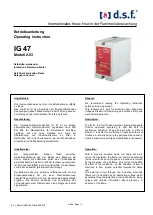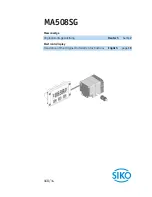
Dakota Ultrasonics
104
Calibrating the Stress Factor
1) Using the mechanical measuring device, measure and record the
Mechanical Length at Zero Load “L
M0
” for each sample bolt.
Note:
The following steps assume that the user has performed the steps in the
previous section and calibrated the velocity. Therefore, the velocity has been
adjusted, approximate length already entered, and the
MAX II
is currently setup
and ready to measure in elongation mode.
2) Apply a drop of couplant to the bolt or transducer, and attach it to one end of
the bolt. Rotate the transducer clockwise and counter clockwise applying a
small amount of pressure to eliminate any excess couplant between the
transducer and bolt.
Be sure to always place the transducer in the same
location
.
This will help to eliminate any potential measurement errors cause
by changing the sound path.
3) Record the Ultrasonic Length at Zero Load “L
U0
”.
4)
Repeat step 2 & 3
for each sample bolt.
5)
Place the first sample bolt in the loading apparatus.
Apply approximately
1/3 of the maximum load, which is to be placed on the bolt under actual
SonicStressFactor
L
L
L
L
L
L
MECHANICAL
ULTRASONIC
Ml
M
Ul
U
0
0
L
MechanicalLength
ZeroLoad
M
0
@
L
UltrasonicLength
Load
Ul
@
L
UltrasonicLength
ZeroLoad
U
0
@
L
MechanicalLength
Load
Ml
@
Summary of Contents for MAX II
Page 2: ......
Page 7: ......
Page 8: ......
Page 54: ...Dakota Ultrasonics 46 Figure 6 Reflection in a bending bolt ...
Page 215: ......
















































